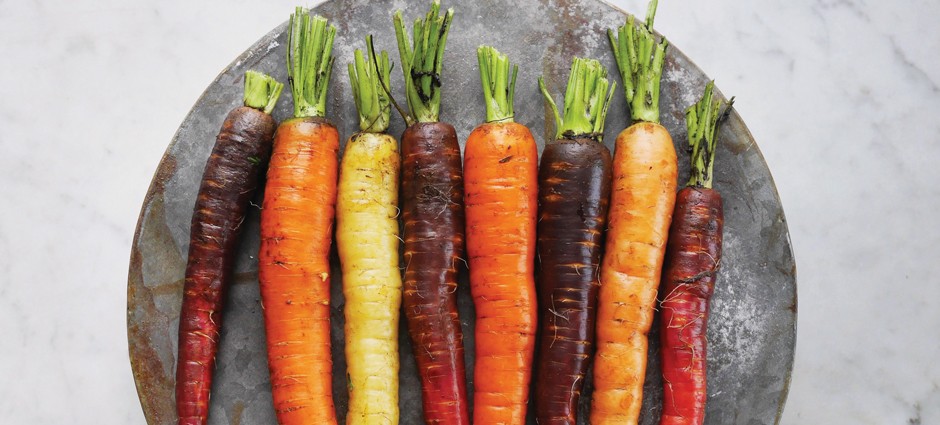Slice ‘em. Grate ‘em. Julienne ‘em. Saute ‘em. Bake ‘em. Carrots are one of the world’s most versatile vegetables.
History
Carrots are a member of the Apiaceae family, which also includes celery, parsnip, dill, fennel, coriander and cilantro. Carrots can be loosely divided into two types: Eastern and Western.
Eastern carrots are closer to the original carrot domesticated in Persia more than 1,000 years ago and are usually purple or yellow.
Western carrots first appeared in the Netherlands in the 17th century. The story goes that Dutch carrot growers invented the orange carrot in honor of the House of Orange, the Dutch Royal Family. Western types are generally classified by their root shapes into Chantenay, Danvers, Imperator and Nantes varieties.
Although most carrots sold in the U.S. are orange, other colors such as white, red, yellow or purple can occasionally be found.
What’s Inside
Carrots are loaded with beta-carotene, a carotenoid that gives the vegetable its orange color. Once ingested, beta-carotene converts to vitamin A, which supports vision, the immune system and reproduction. One cup of carrots contains 428 percent (21,383 IU) of the recommended daily value (DV). Beta-carotene also acts as an antioxidant to protect cells from the damaging effects of harmful free radicals, which can cause chronic diseases such as cancer and heart disease.
Other nutrients in 1 cup of carrots:
- Vitamin K (21% DV), 16.9 mcg
- Vitamin C (13% DV), 7.6 mg
- Potassium (12% DV), 410 mg
- Fiber (14% DV), 3.6 grams
In 2007, the world’s longest carrot was measured at 19 feet 1 7/8 inches. The heaviest one was grown in 1998 and weighed 18.98 pounds.
“Baby carrots” are actually very young carrots harvested while the vegetables are still quite tiny. Baby-cut carrot products are among the most popular items in the produce section.
The average American consumes 8.3 pounds of carrots each year. (Vegetable and Melon Outlook, 2016)
California produces more than 85 percent of all carrots grown in the United States. Michigan and Texas are other prolific carrot-producing states.
Storage
- Carrots can be stored for one to two weeks. Store them in the coolest part of the refrigerator in a plastic bag or wrapped in a paper towel to reduce condensation.
- Keep them away from apples, pears, potatoes, and other fruits and vegetables that produce ethylene gas; it will cause them to become bitter.
- Don’t store on the counter at room temperature.
Did You Know?
Carrots are popular in the food-coloring industry—they are one of the raw materials used by GNT, a global manufacturer of food and beverage ingredients made exclusively from fruits, vegetables and other plants. The main carrot-derived colors are orange and red, but they are often mixed with other raw materials for color variations.
What are you waiting for? Try these carrot recipes:

